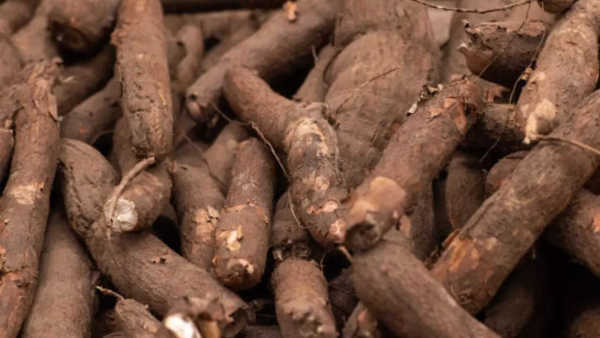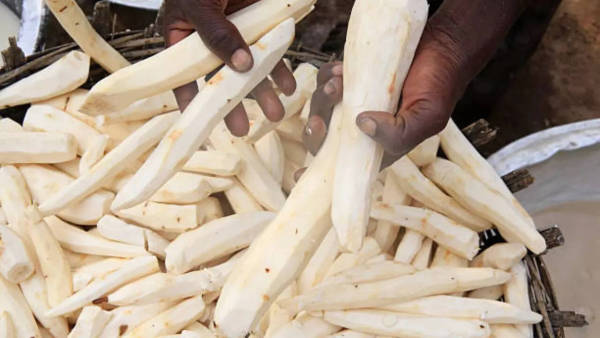Cassava: The super root you're probably ignoring in your diet
Organic food alternatives have been steadily rising in demand. Grown in healthy environments, these foods possess rich sources of vital vitamins and minerals and even show the potential of preventing and healing diseases. Roots in particular are more and more being explored in the human diet and one root that has risen in popularity over time is cassava .
Cassava, also known as manioc, yuca or mandioca is a starchy root vegetable that originated in South America but is now popular across numerous tropical and subtropical areas. According to The Guardian, the super root is a staple food for about 700 million people across the globe. The edible tuberous root is a healthy component to be added to the human diet when cooked properly- by soaking, drying and scraping before consuming.
Why does Cassava deserve a spot in your diet?

According to the National Library of Medicine, approximately 500 million people depend on cassava as a major carbohydrate source, making it the third-largest source of carbohydrate for human food in the world.
According to research published in the National Library of Medicine, root has demonstrated various capabilities such as anti-oxidant, anti-inflammatory, analgesic, anti-cancer, anti-bacterial, anti-diabetic and more.
Cassava is rich in highly digestible starch. It has 83% amylopectin which makes it even more digestible than maize starch. Thus, it is a healthy and easily digestible food. Additionally, the starch in it improves insulin sensitivity and moderates blood sugar spikes.
It is rich in Vitamin C, which is essential in improving collagen production and immunological activity.
The tuberous root has 84% carbohydrates and 26% fats and proteins. Due to its high carbohydrate content, it is a staple food in diets that involve more carbohydrates and is a good dietary supplement for the same.
Many make use of cassava flour in their diet as it is a naturally gluten-free option for people with gluten intolerance or celiac disease.
How to cook cassava ?
When eating cassava, it is extremely important to cook it properly. Raw cassava contains huge amounts of cyanogenic glycol, whose consumption can trigger the body to emit cyanide. This can lead to organ damage, paralysis, reduced gland conduction or even death.
Thus, while cooking it is good to soak peeled cassava for about 48-60 hours in freshwater. Then cook it completely by either simmering, frying or baking.
Cassava, also known as manioc, yuca or mandioca is a starchy root vegetable that originated in South America but is now popular across numerous tropical and subtropical areas. According to The Guardian, the super root is a staple food for about 700 million people across the globe. The edible tuberous root is a healthy component to be added to the human diet when cooked properly- by soaking, drying and scraping before consuming.
Why does Cassava deserve a spot in your diet?

According to the National Library of Medicine, approximately 500 million people depend on cassava as a major carbohydrate source, making it the third-largest source of carbohydrate for human food in the world.
According to research published in the National Library of Medicine, root has demonstrated various capabilities such as anti-oxidant, anti-inflammatory, analgesic, anti-cancer, anti-bacterial, anti-diabetic and more.
Cassava is rich in highly digestible starch. It has 83% amylopectin which makes it even more digestible than maize starch. Thus, it is a healthy and easily digestible food. Additionally, the starch in it improves insulin sensitivity and moderates blood sugar spikes.
It is rich in Vitamin C, which is essential in improving collagen production and immunological activity.
The tuberous root has 84% carbohydrates and 26% fats and proteins. Due to its high carbohydrate content, it is a staple food in diets that involve more carbohydrates and is a good dietary supplement for the same.
Many make use of cassava flour in their diet as it is a naturally gluten-free option for people with gluten intolerance or celiac disease.
How to cook cassava ?

When eating cassava, it is extremely important to cook it properly. Raw cassava contains huge amounts of cyanogenic glycol, whose consumption can trigger the body to emit cyanide. This can lead to organ damage, paralysis, reduced gland conduction or even death.
Thus, while cooking it is good to soak peeled cassava for about 48-60 hours in freshwater. Then cook it completely by either simmering, frying or baking.
Read more









